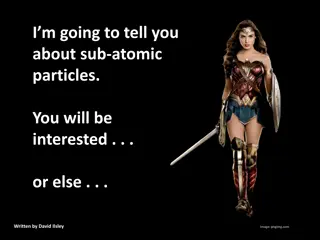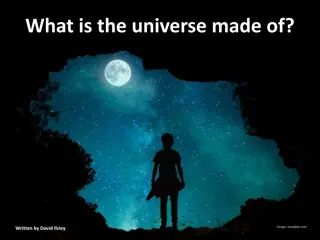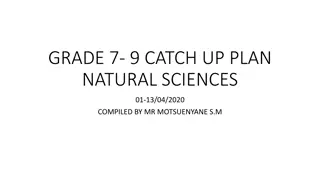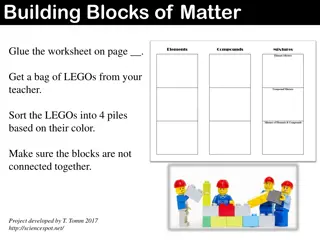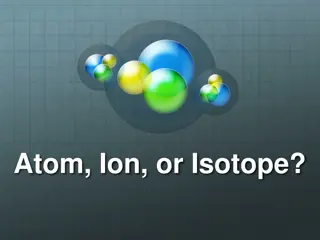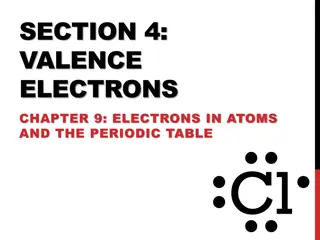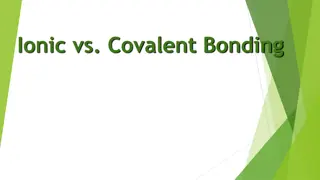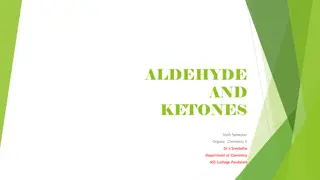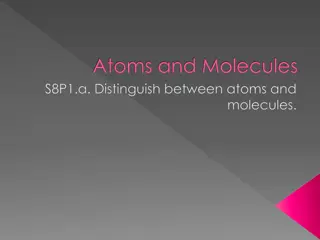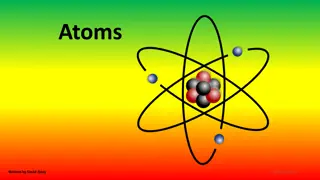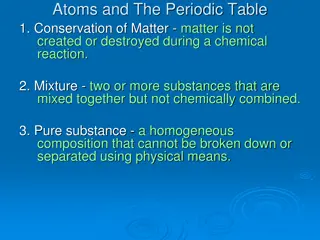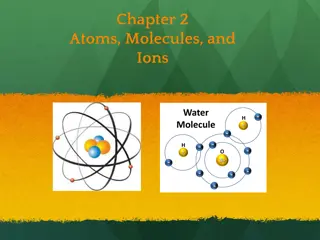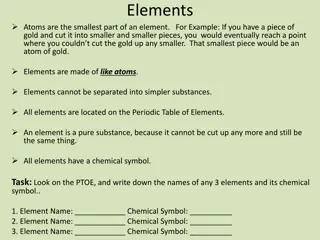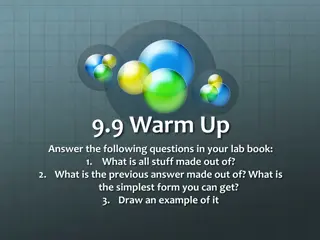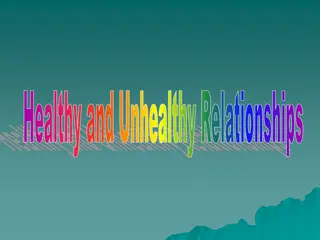Understanding Atoms: The Building Blocks of Life
Atoms are the fundamental units of matter, composed of protons, neutrons, and electrons. This article explores the structure of atoms, the atomic theory, and how atoms make up elements. Discover how changing the number of protons can create different elements, and learn about the periodic table and how it provides essential information about atoms and their properties.
Download Presentation

Please find below an Image/Link to download the presentation.
The content on the website is provided AS IS for your information and personal use only. It may not be sold, licensed, or shared on other websites without obtaining consent from the author. Download presentation by click this link. If you encounter any issues during the download, it is possible that the publisher has removed the file from their server.
E N D
Presentation Transcript
ATOMS Building blocks of life
What are Atoms? Atoms are the building blocks of matter made up of Protons, Neutrons & Electrons.
Inside the Atom A proton is a positively charged (+) particle in the center of the atom An electron is a negatively charged (-) particle on the outside of the atom and are the smallest. A neutron is neutral and has no charge. It is found in the center of the atom with the protons.
ELECTRON NEUTRON PROTON
Atomic Theory All matter is made of atoms. They cannot be destroyed. Compounds are made by combining two or more atoms. A chemical reaction is a rearrangement of atoms.
Atoms make up elements An element is a substance made up of one type of atom The number of protons in an atom decide which element that atom will be. If you change the number of protons then you change the element.
Example: Hydrogen has 1 proton but . if you ADD 5 more protons then you make Carbon + 5 protons
The periodic table The periodic table is a chart that has information about all atoms It s like the alphabet. When you combine different atoms or letters , you make different substances or words
The periodic table The atomic number tells us how many protons are in the atom. The # of protons = the # of electrons. The atomic mass tells us how many protons AND neutrons are in the atom. o Atomic mass= Protons + Neutrons
The periodic table We know carbon has 6 protons. Atomic mass is protons + neutrons, so there are 6 neutrons. Atomic number The atomic number tells us Carbon has 6 protons and 6 electrons. Atomic mass
Molecules vs. Compounds Molecules Compounds Molecules are made by combining atoms of the same element Combining two Hydrogens together makes an H2 molecule A compound is made by combining molecules from different elements Combining H2 and Oxygen makes H2O or a water compound
Memory Check The center of an atom is composed of? o Protons o Neutrons o Electrons
Memory Check If an element has 6 neutrons, 4 protons, and 4 electrons What is the Atomic Mass? Atomic Mass= neutrons + protons o 6+4= 10 o The Atomic Mass is 10
Atoms combine to make matter!!
Matter Matter is anything that has mass (weight) and takes up space Everything is made up of matter; your desk, your pencil, and your water are all made of matter. 3 common states of matter: o Solid o Liquid o Gas
Solid, liquid, or gas? If something is a solid: o The molecules are packed tightly together o Think of ice cubes. It has a shape.
Solid, liquid, or gas? If something is a liquid: o The molecules can flow easily and take the shape of the container o Think of water. It has no shape.
Solid, liquid, or gas? If something is a gas: o The molecules can t be contained and fly around everywhere o Think of the air we breathe. Can you grab it? NO, because the molecules are spread out and flying quickly
If you tried to put these molecules in a jar Liquid Gas Solid Shape of container Free surface Fixed volume Holds shape Fixed volume Shape of container Volume of container
Solid vs. Liquid SOLID LIQUID Has no shape Takes the shape of the container it is in Molecules not packed tightly Has a shape Molecules are packed tightly together
Gas Gas is different It takes the shape of the container The molecules are spread very far apart Example: o When you blow up a balloon, all the air takes the shape of the balloon
Can you figure out what is a solid? book crown water tea cloud duck Air in a balloon Frozen ice cream
Can you figure out what is liquid?
Can you figure out what is a gas?
REVIEW Atoms make up everything we see Atoms have protons, neutrons, and electrons You change what an atom is by adding protons The periodic table is a list of all the atoms in the world
REVIEW When you combine the same atoms you make molecules. When you combine different molecules you make compounds. Matter is anything that takes up space. Matter can be solid, liquid, or gas.


